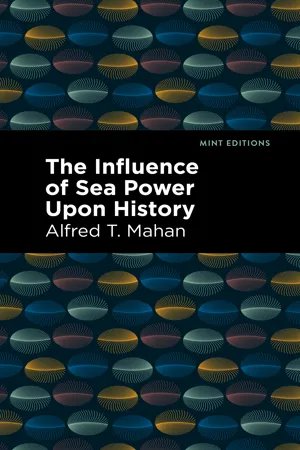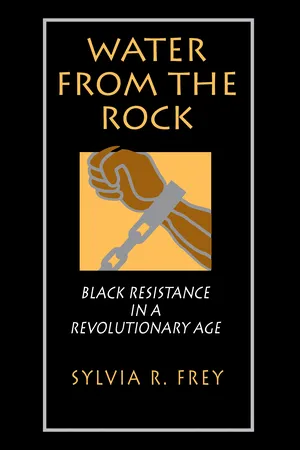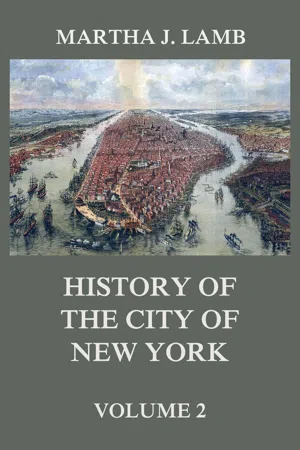Battle of Yorktown
The Battle of Yorktown, fought in 1781 during the American Revolutionary War, was a decisive victory for the American and French forces over the British. General George Washington and French General Comte de Rochambeau led the siege, which ultimately led to the surrender of British General Cornwallis and his troops. This significant battle effectively ended major combat operations in North America.
8 Key excerpts on "Battle of Yorktown"
- eBook - ePub
The American Revolutionary War and The War of 1812
People, Politics, and Power
- Britannica Educational Publishing, Jeff Wallenfeldt(Authors)
- 2009(Publication Date)
- Britannica Educational Publishing(Publisher)
...Thomas Graves was unable to counter French naval superiority at the Battle of Virginia Capes and felt forced to return to New York. A British rescue fleet, two-thirds the size of the French, set out for Virginia on October 17 with some 7,000 British troops, but it was too late. Throughout early October Washington’s 14,000 Franco-American troops steadily overcame the British army’s fortified positions at Yorktown. Surrounded, outgunned, and running low on food, Cornwallis surrendered his entire army on October 19. (The Siege of Yorktown is usually dated from September 28 to October 19.) The total number of British prisoners taken was about 8,000, along with about 240 guns. Casualties on both sides were relatively light. The victory at Yorktown ended fighting in the Revolution and virtually assured success to the American cause. BATTLE OF THE SAINTES A major British naval victory, the Battle of the Saintes, fought on April 12, 1782, ended the French threat to British possessions in the West Indies. Setting out from Martinique on April 8, a French fleet of 35 warships and 150 merchantmen under the comte de Grasse intended to descend upon Jamaica with Spanish help. They were intercepted at the Saintes Passage, between the islands of Dominica and Guadeloupe, by a British fleet of 36 ships commanded by Adm. Sir George Rodney. After preliminary skirmishing, the main action took place on April 12, when a shift in the wind altered the course of two French ships, causing gaps in their line of battle that were quickly entered by the British. The French fleet was thus scattered and the ensuing British victory at the Saintes helped restore Britain’s naval prestige. As a result, in the Treaty of Paris (Sept. 3, 1783) Britain regained most of its islands in the West Indies....
- eBook - ePub
- Alfred T. Mahan(Author)
- 2021(Publication Date)
- Mint Editions(Publisher)
...XIII E VENTS IN THE W EST I NDIES AFTER THE S URRENDER OF Y ORKTOWN— E NCOUNTERS OF D E G RASSE WITH H OOD.— T HE S EA B ATTLE OF THE S AINTS.—1781, 1782. T he surrender of Cornwallis marked the end of the active war upon the American continent. The issue of the struggle was indeed assured upon the day when France devoted her sea power to the support of the colonists; but, as not uncommonly happens, the determining characteristics of a period were summed up in one striking event. From the beginning, the military question, owing to the physical characteristics of the country, a long seaboard with estuaries penetrating deep into the interior, and the consequent greater ease of movement by water than by land, had hinged upon the control of the sea and the use made of that control. Its misdirection by Sir William Howe in 1777, when he moved his army to the Chesapeake instead of supporting Burgoyne’s advance, opened the way to the startling success at Saratoga, when amazed Europe saw six thousand regular troops surrendering to a body of provincials. During the four years that followed, until the surrender of Yorktown, the scales rose and fell according as the one navy or the other appeared on the scene, or as English commanders kept touch with the sea or pushed their operations far from its support. Finally, at the great crisis, all is found depending upon the question whether the French or the English fleet should first appear, and upon their relative force. The maritime struggle was at once transferred to the West Indies. The events which followed there were antecedent in time both to Suffren’s battles and to the final relief of Gibraltar; but they stand so much by themselves as to call for separate treatment, and have such close relation to the conclusion of the war and the conditions of peace, as to form the dramatic finale of the one and the stepping-stone of transition to the other...
- eBook - ePub
- Edward G. Lengel, Edward G. Lengel(Authors)
- 2012(Publication Date)
- Wiley-Blackwell(Publisher)
...Around 2:00 p.m. on 19 October 1781, Crown Forces marched out of Yorktown with cased colors and beating a British march to lay down their arms. On 27 October, St. Simon’s troops began to re-embark, and on 4 November de Grasse, who never set foot on the American mainland, sailed out of Lynnhaven Bay for Martinique. 7. Aftermath and Consequences With the surrender of Lord Cornwallis on 19 October the Franco-American alliance had undoubtedly won an important victory, but only from hindsight does it become obvious, to paraphrase the marquis de Lafayette, that the curtain had fallen on the final act of the War of Independence. Contemporaries were by far not as sanguine about the inevitability of “Independency.” On 26 October, Wayne described the victory in a letter to Morris as “an event of the utmost consequence & if properly improved, may be productive of a glorious & happy peace.” Writing from his home at Mt. Vernon on 18 November Washington too thought Cornwallis’ surrender “an interesting event that may be productive of much good if properly improved” (WGW, 23:352). Washington and Wayne knew all too well that the men taken prisoner constituted only about one fourth of British land forces operating on the American mainland: Clinton still had 15,000 troops available in New York City alone, with thousands more stationed across the colonies. The year 1781 had been successful beyond hope, largely due to the help provided by France. French silver had paid the Continental Army at Head of Elk, there were more French soldiers outside Yorktown than Americans, and the fleet that blocked Cornwallis’ escape was French as well...
- eBook - ePub
- Jeremy Black(Author)
- 2021(Publication Date)
- The History Press(Publisher)
...The strategy that was to lead to Yorktown was already clear, though it was to be a remarkable combination of luck and planning that brought two French fleets, a French army and Lafayette’s Virginia force together at Yorktown in September and October 1781. In February Washington decided to reinforce American units in the area in order to take advantage of the sailing of the French Newport fleet. He sent 1,200 men under the Marquis de Lafayette to cooperate with the French squadron, which was itself carrying troops, and the local militia. Washington was well aware of the crucial role of naval power, instructing Lafayette on 20 February that if the French fleet was unable to cooperate ‘you will return with the detachment under your command, as the enemy cannot be effected by it while they have the command of the water’. Delayed by heavy rain and bad roads, Lafayette reached the Chesapeake in early March, only to find first that the French squadron had not arrived and later that the British fleet still dominated the bay after the battle of the Virginia Capes, ‘a circumstance which destroys every prospect of an operation against Arnold’. 11 Later in the month Arnold was reinforced by over 2,000 troops under Major-General William Phillips, who assumed command of the entire force. Clinton had been able to send them only because naval control of the Chesapeake had been assured. Thus, the campaign in March underlined a number of strategic lessons that were to be demonstrated again that autumn when Cornwallis surrendered at Yorktown. The vulnerability of a British position in the Chesapeake had been indicated, but so also had been the possibility of saving it and rendering a build up of opposing forces on land abortive if only naval superiority could be maintained or regained. COWPENS AND GUILFORD COURT HOUSE In the meantime Cornwallis was finding the pacification of the south an increasingly intractable task. Greene arrived in Charlotte in early December 1780...
- eBook - ePub
Water from the Rock
Black Resistance in a Revolutionary Age
- Sylvia R. Frey(Author)
- 2020(Publication Date)
- Princeton University Press(Publisher)
...For black bondmen the dream was about to end. After trying unsuccessfully to engage “the boy,” as he called the young French officer Lafayette, Cornwallis abandoned Richmond on June 20 and advanced by way of Bottoms Bridge to Williamsburg, which he occupied for ten days before moving on to Jamestown. Under orders from Clinton to establish a base on the Chesapeake, Cornwallis and his engineers decided to occupy the little tobacco port of Yorktown, situated close to the mouth of the York River. While several thousand black followers of the army labored under the hot August sun to fortify the village of Yorktown and Gloucester Neck across the river, a fleet of twenty–eight sail of the line commanded by Count de Grasse was approaching the capes of Virginia. Soon land forces commanded by the Marquis de St. Simon began disembarking at Jamestown Island while thirty–two hundred militiamen were assembling at Williamsburg to block the British peninsula escape route. 137 On September 28 the Franco–American siege of Yorktown began. By early October the town was completely invested by land and water, “caught,” the Virginia General George Weedon exulted, “handsomely in a pudding bag.” 138 Unable to conduct foraging expeditions, the beleagured garrison was quickly faced with critical shortages of forage and provisions. To prevent them from starving to death, Cornwallis ordered all of the artillery and baggage horses slaughtered and their remains thrown into the York River. Several days later the bloated bodies of the dead animals “came back in heaps with the tide” to foul the air with the stench of death. With the same unflinching determination Cornwallis ordered the expulsion of the black followers of the army to extend the dwindling supplies of food and thereby save his hungry and ailing troops to fight another day...
- eBook - ePub
The Fifteen Decisive Battles of the World
From Marathon to Waterloo
- Edward Shepherd Creasy(Author)
- 2012(Publication Date)
- Dover Publications(Publisher)
...But the British government, elated with the first successes of Burgoyne, refused to listen to any overtures for accommodation. But when the news of Saratoga reached Paris, the whole scene was changed. Franklin and his brother commissioners found all their difficulties with the French government vanish. The time seemed to have arrived for the House of Bourbon to take a full revenge for all its humiliations and losses in previous wars. In December a treaty was arranged, and formally signed in the February following, by which France acknowledged the Independent United States of America. This was, of course, tantamount to a declaration of war with England. Spain soon followed France; and before long Holland took the same course. Largely aided by French fleets and troops, the Americans vigorously maintained the war against the armies which England, in spite of her European foes, continued to send across the Atlantic. But the struggle was too unequal to be maintained by this country for many years: and when the treaties of 1783 restored peace to the world, the independence of the United States was reluctantly recognized by their ancient parent and recent enemy, England. SYNOPSIS OF EVENTS BETWEEN THE DEFEAT OF BURGOYNE AT SARATOGA, 1777, AND THE BATTLE OF VALMY, 1792. A.D. 1781. Surrender of Lord Cornwallis and the British army to Washington. 1782. Rodney’s victory over the Spanish fleet. Unsuccessful siege of Gibraltar by the Spaniards and French. 1783. End of the American war. 1788. The States-General are convened in France:—beginning of the Revolution....
- eBook - ePub
- Martha J. Lamb(Author)
- 2017(Publication Date)
- Jazzybee Verlag(Publisher)
...Two days later, while Baltimore was celebrating the arrival of Washington in that city, Greene was fighting the bloody battle of Eutaw Springs, which prostrated the British power in South Carolina. On the 9th, Washington rode from Baltimore to Mount Vernon, his beautiful home on the Potomac, which he had not seen in six years. He remained there two days dispensing hospitalities to the illustrious generals of two nations with courtly grace. On the 14th he arrived at Williamsburg, twelve miles from Yorktown, where he was welcomed by Lafayette. Energetic preparations were made without delay, and the combined armies marched on the 28th from Williamsburg, encamping in the evening within two miles of Yorktown. By the first of October the line of besiegers formed a semicircle, each end resting on the river; thus the investment of Yorktown by land was complete. On the dark and tempestuous night of the 5th trenches were opened with great secrecy six hundred yards from the works of Cornwallis — the Americans working on the right, the French on the left — the whole force commanded by General Lincoln, whose most efficient aide-de-camp was Matthew Clarkson of New York. Within three days the parallel nearly two miles long was completed, under a perpetual and heavy fire of shot and shells from the enemy; not until the 9th, in the evening, were the American batteries in readiness to reply, after which the cannonading upon both sides was incessant. On the 11th the second parallel was commenced, three hundred yards only from the British works. Two advanced redoubts in the way of its progress were stormed on the 14th; Hamilton, who had retired from the private service of Washington and was now in command of a New York battalion, conducted the assault upon one of these, and Lafayette that upon the other. Both were successful...
- eBook - ePub
Ordinary Courage
The Revolutionary War Adventures of Joseph Plumb Martin
- James Kirby Martin(Author)
- 2012(Publication Date)
- Wiley-Blackwell(Publisher)
...A squadron of 14 British vessels had followed the French ships north from the West Indies but had lost contact and proceeded to New York. There joined by five warships, the expanded British fleet under the overall command of Admiral Thomas Graves returned to Chesapeake Bay, only to be defeated in the Battle off the Chesapeake Capes on September 5. Nine days later Graves sailed away with his wounded craft for New York, leaving the French in complete control of the bay and Cornwallis cut off from rescue by sea. With British warships no longer a threat, the flotilla of allied vessels in the northern Chesapeake began sailing southward on September 18. Eight days later Martin and his comrades began debarking at Burwell’s Ferry, about six miles south of Williamsburg on the James River. 13 During the eighteenth century Williamsburg, located on the peninsula between the York and James rivers, served as Virginia’s capital. Yorktown is about 12 miles to the southeast. We marched from Williamsburg the last of September. It was a warm day; when we had proceeded about halfway to Yorktown we halted and rested two or three hours. Being about to cook some victuals, I saw a fire which some of the Pennsylvania troops had kindled a short distance off. I went to get some fire while some of my messmates made other preparations.… I had taken off my coat and unbuttoned my waistcoat, it being (as I said before) very warm; my pocketbook containing about five dollars in money and some other articles, in all about seven dollars, was in my waistcoat pocket. When I came among the strangers, they appeared to be uncommonly complaisant, asking many questions, helping me to fire, and chatting very familiarly. I took my fire and returned, but it was not long before I perceived that those kindhearted helpers had helped themselves to my pocketbook and its whole contents...







